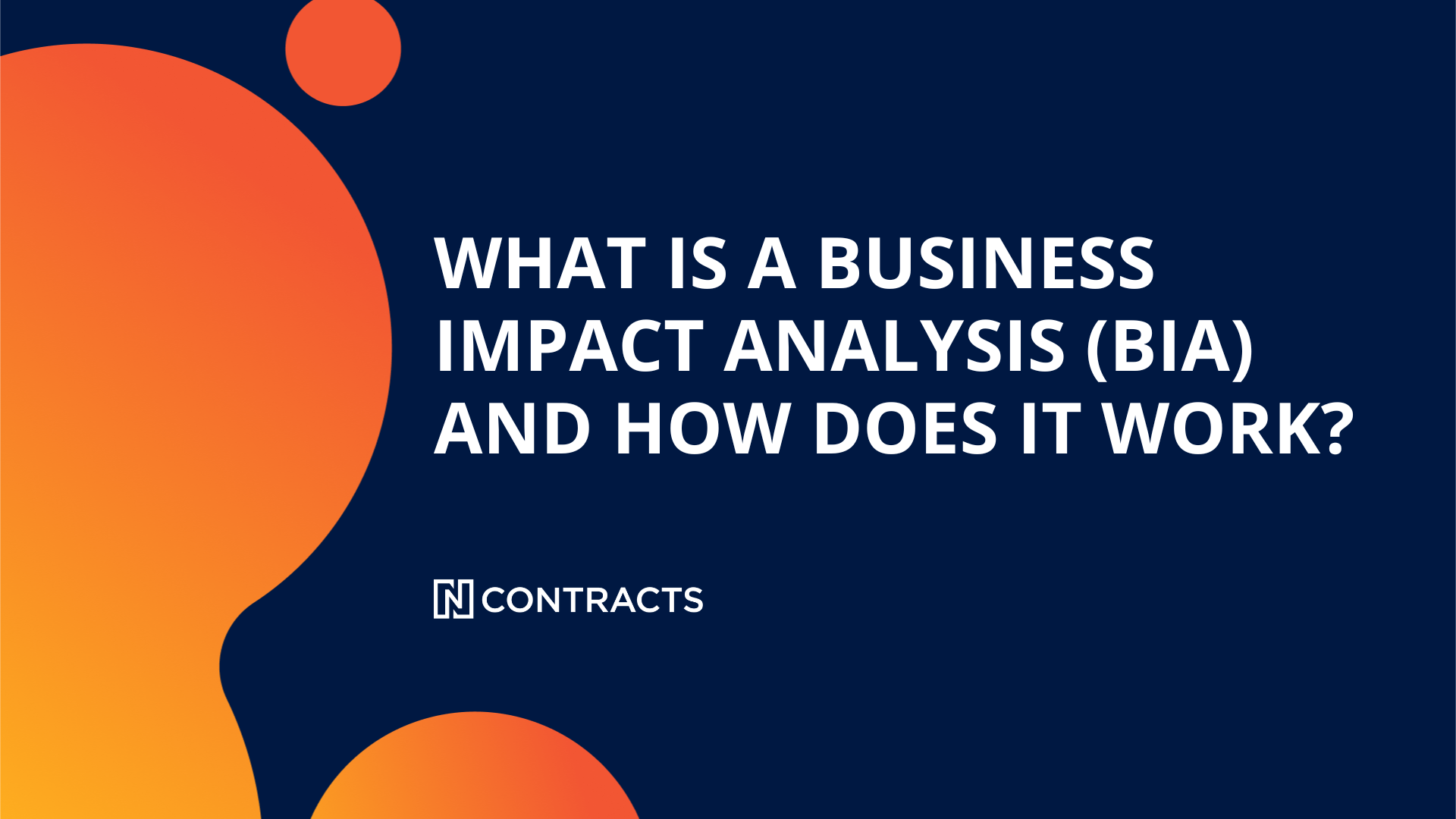With constant change, emerging risks, and ongoing regulatory updates, financial institutions (FIs) must stay prepared for anything. Maintaining business resiliency starts with a solid foundation in business continuity.
What’s the difference between business resiliency and business continuity? And can BCM help FIs stay strong and adaptable? Let’s take a closer look.
Related: What is Business Continuity for Financial Institutions?
Table of Contents
- What is business resiliency?
- What is business continuity management (BCM)?
- The role of governance and risk appetite in BCM
- How BCM fits into enterprise risk management (ERM)
- The BCM lifecycle explained
- Benefits of using BCM software
- Actionable takeaways: strengthening resilience with BCM
What is business resiliency?
Business resiliency is an FI’s ability to anticipate, prepare for, and adapt to changing conditions to withstand and rapidly recover from disruptions. Disruptions can occur internally and externally and take many forms, such as power outages, data breaches, and system failures.
While business continuity focuses on maintaining critical functions and minimum service levels during a disruption, business resiliency takes a more holistic approach. It considers the FI’s strategic goals and financial objectives and how it can continue to thrive and innovate amid changes and challenges.

While they are separate concepts, business continuity is essential to maintaining business resiliency.
Related: A Guide to Operational Resilience for Financial Institutions
What is business continuity management (BCM)?
The Federal Financial Institutions Examination Council’s (FFIEC) latest guidance – the Business Continuity Management booklet – redefined how FIs should think about business continuity by changing the term “business continuity planning” (BCP) to “business continuity management” (BCM). The update didn’t just revise terminology — it marked a fundamental shift in expectations.
As a result, more FIs are going beyond post-event recovery planning and focusing on maintaining systems and controls to strengthen overall business resiliency, reflecting the shift from BCP to BCM.
Related: Does Your BCP Have a BCP?
The role of governance and risk appetite in BCM
Governance (i.e. the internal rules, processes, policies, and structures that guide an organization's decision-making and strategy) is an integral part of overall business resilience. A strong governance and risk management strategy can't be executed to its potential without the right team, including the board and management.
Long gone are the days of the board simply signing off on plans. They must actively understand and oversee continuity risks, ensuring that BCM strategies align with an institution's risk appetite, its guide for strategic decision-making, and resource allocation. Management is responsible for implementing controls, maintaining resilience, and adapting capabilities as continuity risks evolve.
Related: Expert Q&A: What Is a Risk Appetite Statement?
How BCM fits Enterprise Risk Management (ERM)
The FFIEC’s guidance notes that an institution’s BCM should integrate with its enterprise risk management (ERM). The level and formality of the integration should align with the FI’s complexity and risk profile.
The guidance also recommends evaluating inherent risks and the effectiveness of controls to determine overall residual risk. Examiners are primarily interested in whether organizations appropriately assess the likelihood and impact of potential disruptions and whether their risk strategies are designed to support overall resilience.
As FIs consider their organization’s ERM strategies and build resilience, there are a few emerging risk areas to evaluate:
- Cyber risk: Cyber threats, including ransomware attacks and data breaches, can heavily impact an FI's operations and data security, among other risk areas. Regular testing of incident response and disaster recovery plans is crucial in preparing for cyber incidents.
- Third-party risk: As FIs rely on more vendors, third-party risk increases. In his book The Upside of Risk, Ncontracts founder and CEO Michael Berman highlights the importance of vendor management in business continuity. "If vendor management isn't represented in business continuity planning, there will be substantial holes in the plan, limiting its ability to mitigate the risk of a crisis." Incorporating third-party risk into BCM ensures vendor-related disruptions are anticipated and managed appropriately.
- AI and advanced technology risk: Artificial intelligence can help streamline and automate many operational tasks, but it also introduces new risks. Using an AI auditing framework can help FIs navigate these powerful technologies' risks, ethics, and controls.
Related: 2025 Third-Party Risk Management Survey
The BCM lifecycle explained
Effective BCM spans the entire organization, ensuring critical operations remain resilient. It should be embedded in the risk management lifecycle and aligned with strategic objectives.
The FFIEC outlines a 10-step BCM lifecycle that includes:
- Governance over resilience, continuity, and response efforts
- Alignment of BCM with business goals
- Business impact analysis to identify critical functions and dependencies
- Risk assessment of potential disruptions
- Development of resilience and recovery strategies
- Creation of a comprehensive continuity plan
- Training for staff and key stakeholders
- Testing and exercises to validate plans
- Ongoing updates to reflect evolving risks
- Monitoring and reporting on resilience efforts

FIs can tailor the cycle into a single BCM policy or function-specific policies. At a minimum, policies should define scope, roles, accountability, and guidance for maintaining resilience.
Benefits of using BCM software
Business continuity software helps FIs plan for and respond to operational disruptions. It streamlines developing, documenting, and maintaining business continuity and disaster recovery plans.
Key functions include:
- Identifying essential functions, systems, and processes
- Conducting risk assessments and business impact analyses
- Building, testing, and updating the business continuity plan
- Ensuring data backup — often via private cloud — and recovery
- Supporting regulatory compliance and industry standards
- Providing communication tools and review reports for decision-making
The right BCM software is a critical tool for resilience and regulatory readiness. It helps institutions prepare for adverse events, manage emergencies, and sustain operations with minimal disruption.
Actionable takeaways: strengthening resilience with BCM
How can FIs integrate BCM into daily operations and work toward a strong, more resilient organization? Here are some takeaways to help you get started:
- Broaden your approach from continuity to resiliency. While business continuity is foundational, resiliency goes beyond survival. It’s about adapting, innovating, and aligning with long-term strategic goals.
- Integrate continuity into day-to-day decision-making. Treat BCM like any other core risk function — monitored, measured, and managed regularly. Institutions already practicing strong ERM are well-positioned to seamlessly integrate BCM.
- Embed BCM into your ERM framework. BCM should fully integrate with ERM, reflecting your institution’s risk profile and complexity. Evaluate residual risks by assessing inherent risks and control effectiveness.
- Elevate board and management oversight. Governance plays a critical role in resilience. Ensure the board actively understands continuity risks and that management aligns BCM efforts with the institution’s risk appetite.
- Stay proactive on emerging risks. Regularly reassess risks tied to cyber threats, third parties, and AI. These evolving areas require strong testing protocols, vendor risk integration, and AI risk frameworks.
- Use BCM software to strengthen resilience. Leverage technology to centralize planning, automate risk analysis, support compliance, and maintain data recovery capabilities. The right tools improve both preparedness and response.
Want to learn more about how BCM software and services can support your FI?
Subscribe to the Nsight Blog
Share this
You May Also Like

What is a Business Impact Analysis (BIA) and how does it work?

How Does Your Business Continuity Plan Measure Up?


